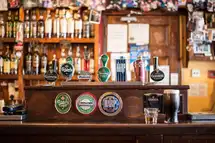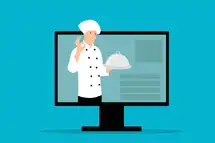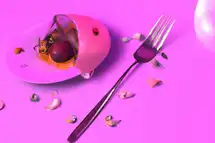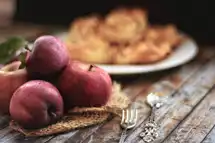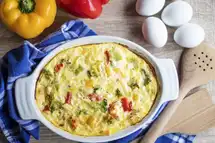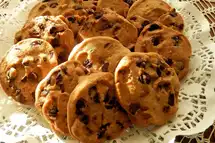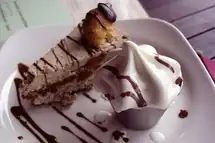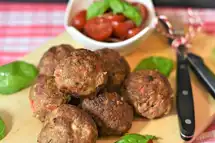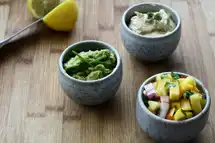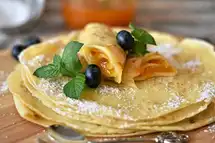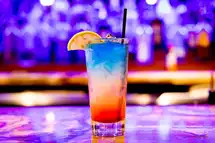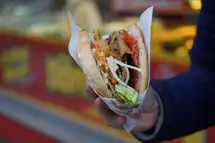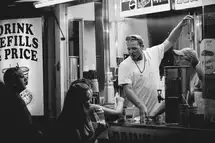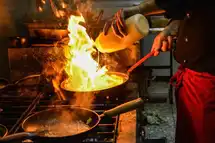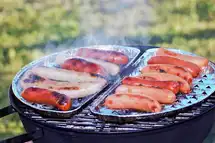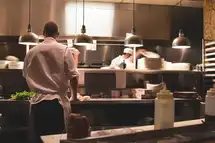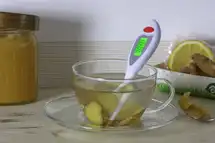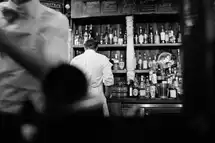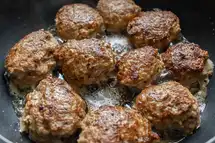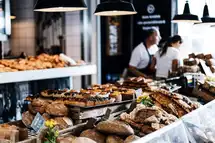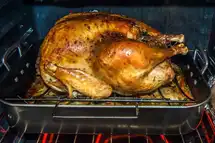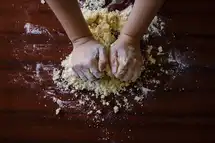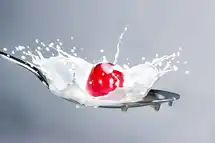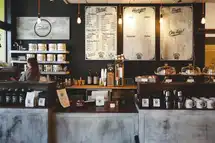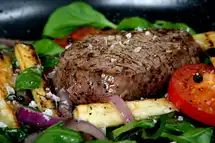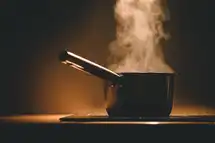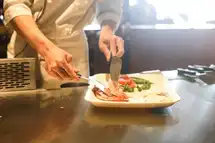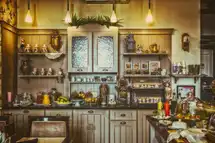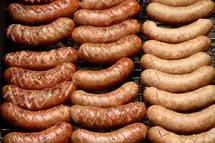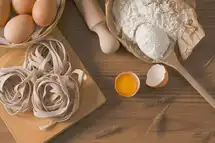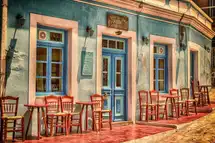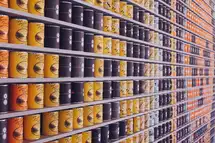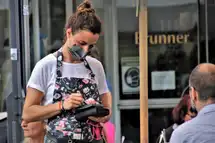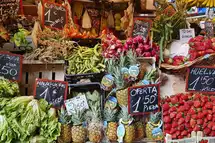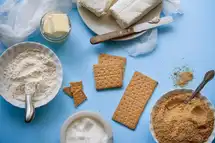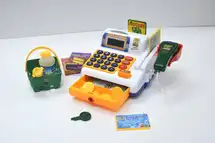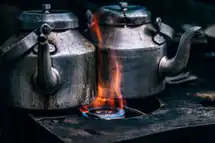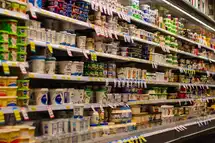What is cheesecake?
Cheesecake is a dessert made with cream cheese, eggs, and sugar. While it might sound simple, there are a variety of ways to make a cheesecake. From classic to modern, there are many variations of this delicious dessert.
A No-bake Chocolate Cheesecake Recipe That Will Become Your Favorite Dessert
What is Cheesecake?
Cheesecake is a well-known dessert made of a thick and creamy filling of eggs, cheese, and sugar that sits on top of a thin crust, with salty or sweet toppings. The cheesecakes common in North America, including the New York style cheesecake, use a filling of cream cheese and have a crispy crust made from cookie or graham cracker crumbs. Toppings are typically made from caramel or chocolate syrup, fruit sauces, fruit pieces, sour cream, whipped cream, or nuts.
There are several varieties of cheesecake consumed in different parts of the world, all using different ingredients. For example, in Italy, cheesecakes are made from light ricotta cheese. A creamy milk product called quark is, on the other hand, popular in other parts of Europe.
Cheesecakes can be baked or simply refrigerated. The latter are no-bake versions whose filling and crust firm up in the refrigerator. Refrigeration is, in fact, important even for baked cheesecakes to set the filling. No-bake cheesecakes are your best option when you don't have an oven available or want to put together a delicious dessert quickly and easily.
Origins of the Classic Cheesecake
This delectable dessert is widely regarded as the favorite dessert of New York City, and is often considered to have originated in the city. However, there are contesting accounts that take the origins of the cheesecake back to Ancient Greece.
One of the earliest known recipes dates back to the first century and calls for a couple of pounds of 'well-crushed' cheese mixed with a single egg and flour. This earliest avatar of the cheesecake was made into a loaf and baked under a brick in a fire. It was far removed from the creamy version of the cheesecake we are familiar with today.
A similar kind of dessert was consumed by Olympic athletes as an energy source. In 250 BC, Greek poet Archestratus mentions the cheesecake in 'Life of Luxury', a gastronomic travel guide. When the Romans conquered Greece, the cheesecake recipe passed into their hands. Roman historian Cato de Elder's farming manual of 160 BC, called De Agri Cultura, mentions a number of cheesecake recipes.
The cheesecake recipes listed by Cato consist of a sweet version called 'savillum' and a savory version called 'libum'. The latter is related to the modern-day term 'libations', which indicates that these simple flour and baked cheese mixtures were used as offerings to the gods.
A more complex Roman cheesecake called 'placenta' involves cheese, dough, and honey being layered together and flavored with bay leaves. Ancient cheesecakes were also sprinkled with black poppy seeds.
The modern-day cheesecake took shape at the same time the creamy Neufchatel cheese emerged in France. In 1872, a dairy farmer in New York tried to recreate this French cheese but failed. What emerged instead was what came to be known as American cream cheese. Arnold Reuben, who owned Reuben's Restaurant and Delicatessen and The Turf Restaurant, is held to be the progenitor of the iconic New York cheesecake in the 1920s.
As mentioned in the preceding section, cheesecake today exists in multiple forms, apart from the New York style. These are the Italian, German, Chicago, Philadelphia, Swedish, and Japanese versions of the cheesecake.
Cheesecakes are delicious, but they require a lot of time and energy to make.
Making this cheesecake recipe is as simple as it gets.
How to Make the Perfect No-Bake Chocolate Cheesecake
Whether baked or not, the main ingredients for cheesecakes are cream cheese, heavy whipped cream, and white sugar.
Cheesecakes usually consist of a crust made from graham crackers. This contains crumbs of plain graham crackers and melted butter, and occasionally, a bit of sugar. Cheesecake crusts can also be made from chocolate cookies for added flavor. No-bake cheesecake recipes don't use raw eggs.
Some no-bake cheesecake recipes recommend the use of sweetened condensed milk to make the filling adequately fluffy and give it good structure.
Cheesecake fillings need to be refrigerated for six to eight hours at the minimum to allow them to firm up entirely. If the filling doesn't firm up even after refrigeration, you need to freeze the cheesecake. However, freezing it unwrapped for too long can turn the texture gritty.
In order to ensure Food Safety, store a cheesecake well-covered in a refrigerator. This way it stays fresh for five to six days. On the other hand, if it is wrapped tightly in plastic and frozen, your cheesecake will be safe to consume even three to four months later.
Ingredients for Chocolate Cheesecake
This no-bake chocolate cheesecake can be prepared in just half an hour. The chill time required is four hours. Here's what you need for the recipe-
For the Oreo cookie crust-
- 14 ounces (or about 36) of Oreo cookies with filling (crushed into crumbs)
- 1/2 cup of melted unsalted butter
- 1 tablespoon of unsweetened cocoa powder
For the chocolate filling-
- 24 ounces of softened cream cheese
- 2 tablespoons of unsweetened cocoa powder
- 1 1/2 cups of granulated white sugar
- 2 teaspoons of vanilla extract
- 1 cup of heavy whipped cream
- 12 ounces of melted and cooled semi-sweet chocolate bars
Steps to Making Chocolate Cheesecake
- Take a 9-inch springform pan and line it with parchment paper. Set aside.
- For the crust, stir together melted butter, Oreo crumbs, and cocoa in a large bowl till they are combined thoroughly and moist evenly. Transfer the mixture to the prepared springform pan. Using a flat-bottomed cup press the Oreo crumbs into the bottom of the pan and halfway up its sides. Freeze till the filling is prepared.
- For the filling, take an electric mixer that is fitted with a whisk or paddle attachment, and use it for beating cream cheese in a large bowl for about a minute. Add cocoa and sugar and mix for about a minute until smooth. Mix in the melted chocolate and vanilla extract. Add the heavy whipped cream and mix for about one to two minutes until soft peaks start to form. Spoon the filling onto the cheesecake crust and spread it evenly.
You’ve had enough of the same old dessert recipes.
You want to try something new. Something that will make you drool.
Store-bought Vs. Home-made - What's Better?
Store-bought cheesecakes are pricier than homemade ones. The cream cheese used in the cheesecake is an expensive ingredient, whether you've purchased your dessert from the stores or made it yourself. With store-bought cheesecake, you need to add labor and storage cost, and also make room for the profit the Restaurant Business selling the dessert wants to make.
Furthermore, store-bought cheesecake may contain starches, gums, stabilizers, and other additives. With homemade cheesecakes, on the other hand, you can control what ingredients go into making your dessert, and in what quantity. If you are conscious about your waistline, you can adjust the amount of cream cheese, sugar, and chocolate you put into your dessert. Homemade cheesecakes are, therefore, healthier.
As far as storage is concerned, store-bought cheesecakes can last up to seven days, but their homemade cousins last for about five days.
The shelf-life of homemade cheesecakes can, however, be raised by freezing. When it comes to freezing, homemade cheesecakes fare better as the toppings can be whipped and added just before serving. When you consider that sometimes the toppings are more volatile than the fillings (for instance, unstabilized whipped cream holds up only for a day or two), homemade cheesecakes put you on a firm footing, while you can't be sure that the fancy toppings used in store-bought cheesecakes will freeze well.
Cheesecake Tips and Tricks
Make sure that the cream cheese is at room temperature. This would allow the ingredients to mix well and prevent the cheesecake from getting lumpy.
Don't go for anything fancy; just look to use regular full-fat cream cheese. This will ensure that the cheesecake texture is rich and creamy. Of course, if you worry too much about your calorie intake, you may want to cut down on the fat content.
Use some cornstarch or flour. Starch stops the egg proteins from over-coagulating and this gives the cheesecake a creamier texture. This way, you can also make sure there aren't any cracks in the cheesecake. For those looking for a gluten free alternative, cornstarch works perfectly. Use twice as much flour as your would cornstarch.
Adding sour cream helps in giving your cheesecake added zest. The creamy texture and tangy flavor created by sour cream make your cheesecake all the more delicious. You may also use Greek yogurt in place of sour cream.
Over-mix the batter or mixing it too quickly will add more air to the batter than needed. Too much air in the batter results in cracks and craters in the cheesecake and may also cause the cheesecake to rise too fast or too much, and crack.
Make sure to use a springform pan. You also must not skip the water bath. The steam generated by a water bath ensures that the cheesecake doesn't dry out and crack. If you are baking your cheesecake, a water bath helps you in preventing the dessert from baking more quickly on the sides than the middle, resulting in the cheesecake browning too much on the edges and collapsing in the middle. A water bath helps in preventing cracks in the cake.
The best way to defrost a cheesecake is to leave it in the refrigerator overnight. It can also be defrosted by leaving it well-sealed on the counter for four to five hours. This, however, is avoidable as allowing perishable food products to sit at room temperature for more than two hours may not be safe. You can, however, leave the cheesecake on the counter for an hour before serving. Ideally, leave off toppings when you freeze a no-bake cheesecake so that the thawing is hassle-free.
If you are not going to consume the whole cheesecake within two to three days, it can be sliced into smaller pieces and each piece can then be frozen separately. Leftovers can be refrozen if the cheesecake had been thawed in the refrigerator.
You think making a cheesecake is a daunting task.
You believe there are many steps, and the process is long and complicated. You're wrong!


